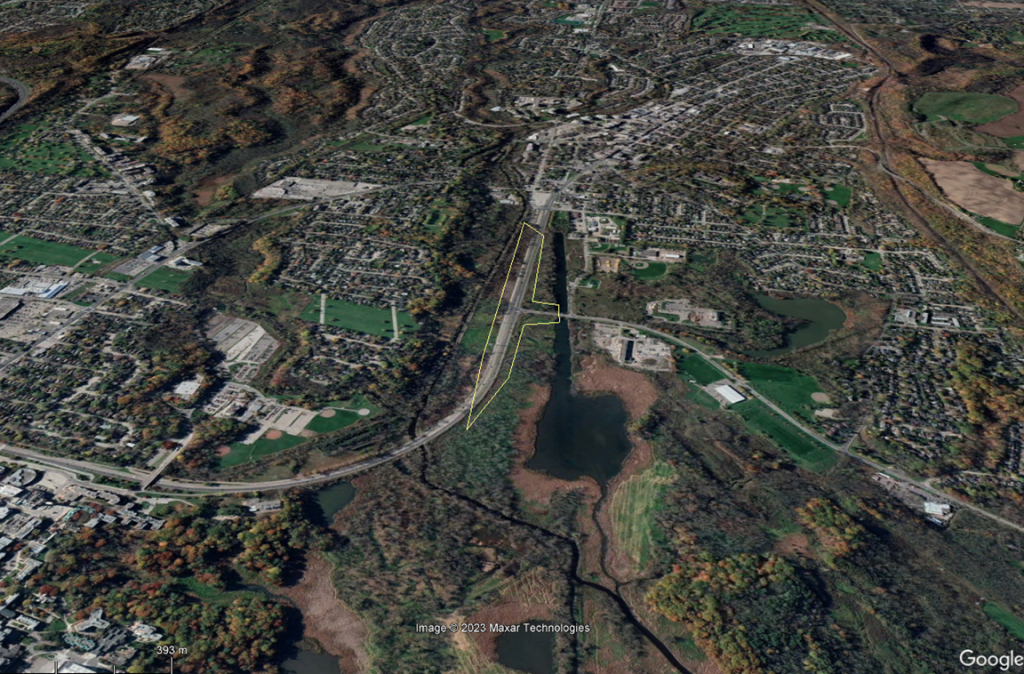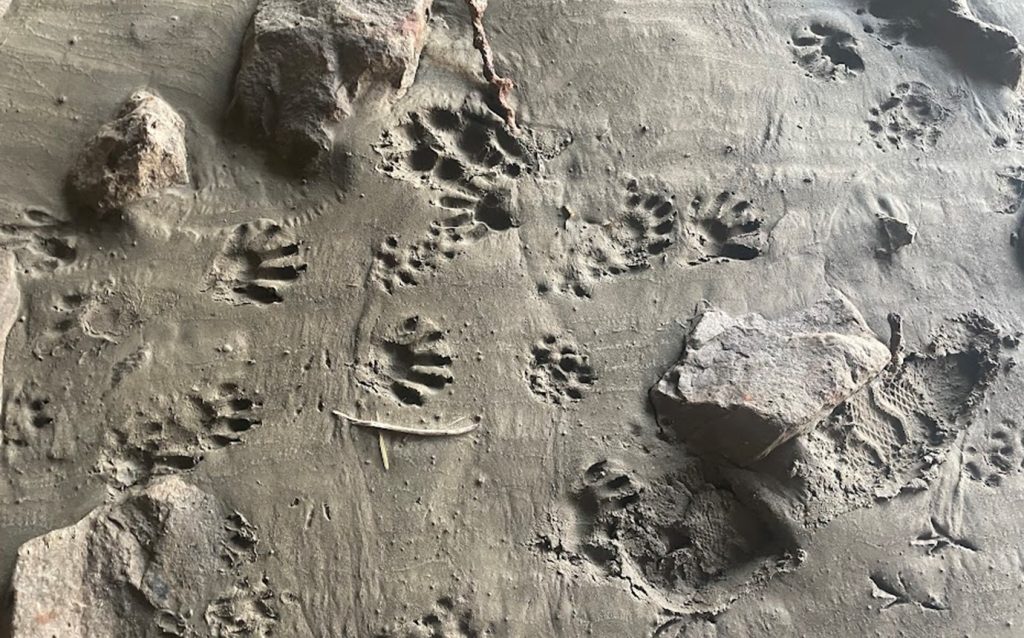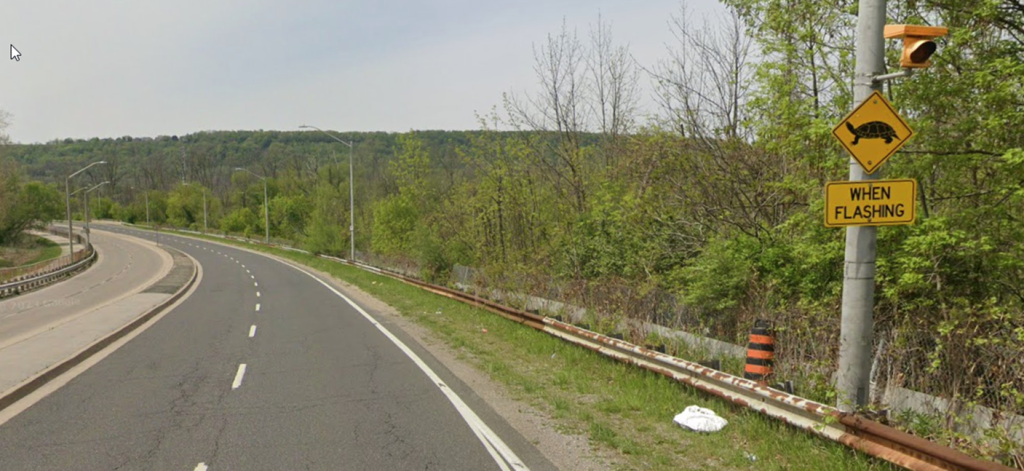| Membership | Price (+HST) |
|---|---|
| Single | $85/year |
| Single Plus | $120/year |
| Family | $130/year |
| Family Plus | $175/year |
| Contributing | $300/year |
| Supporting | $600/year |
| Sustaining | $1,000/year |
| Benefactor's Circle | $2,500/year |
| Director's Circle | $5,000/year |
| President's Circle | $10,000/year |
Cootes Drive Roadside Wildlife Protection Upgrade
By Tys Theijsmeijer, Sr. Director Ecosystem Stewardship, Royal Botanical Gardens
Along Cootes Drive existing roadside wildlife barriers are being replaced and upgraded in December 2023 as part of an Ecological Corridors pilot project funded through Parks Canada. The barrier upgrade is a collaboration spearheaded by Royal Botanical Gardens (RBG) working with City of Hamilton and Hamilton Conservation Authority (HCA). The project involves the upgrade of about 1km of existing interim barrier on both roadsides, and an extension of 820ft (250m) on the south side west towards Dundas. The barrier will be low profile about 3ft tall chain link fence to withstand the debris flying from the road as well as the flood waters. It will be backed with 3ft tall Animex sheet buried 10 inches (20cm) into the ground along the entire length to keep small animals such as snakes, young turtles and frogs from also accessing the road. Sections of the road will still remain without barriers and a 1200ft (365m) long section intended to be upgraded near the Spencer Creek bridge remains on hold as a gas pipeline runs directly under the preferred barrier location.

Few roads in Hamilton pose more challenges for wildlife than Cootes Drive, a 2 km highway built in 1936 as a pilot project for future highway designs and cut through Cootes Paradise Environmental Protection Area. Much of the road is directly within Cootes Paradise Marsh. The road not only is within the marsh, but it is also the wildlife migration separator between Cootes Paradise Nature Reserve (RBG) and Dundas Valley Conservation Area (HCA). These features are two of the largest “core area” environmental protection areas in Hamilton and represent the landscape where Lake Ontario meets the Niagara Escarpment. The challenges and opportunities of this area are highlighted in the Cootes to Escarpment EcoPark Systems Cootes Paradise Heritage lands Management Plan.
Interim wildlife barriers began to appear along this road in 2013 built in sections year over year through collaboration of Royal Botanical Gardens and City of Hamilton. Hamilton Conservation and Ontario Hydro joined the project in 2018 and 2020 with sections established along their adjoining properties. Despite the barrier work safe crossing points for wildlife are limited with the road bridge over Spencer Creek the only site usable by all species. For wetland animals there are two additional existing large watery culverts under the roads that are usable for species such as mink, beaver, and turtles. Several other small culverts (1.5ft diameter) also exist but are not usable as they are water filled most of the year. At the same time under the Spencer Creek bridge animal tracks of many species are found indicating it is successfully used.

The animal roadkill issue is being documented on INaturalist, and more than a decade ago inspired Dundas Turtle Watch, a community group to form to assist the turtles focusing on nesting and hatchling season. Roadkills have decreased dramatically with the interim barriers and the efforts of the volunteers with turtle roadkills reduced by >95%. At the same time turtle reintroduction programs have been established and so there is a better future ahead for turtles and other wildlife. A similar barrier project is underway at Plains Road in Burlington along RBGs Hendrie Valley Nature Sanctuary and where the last sizeable population of Blanding’s Turtles exist.

Wildlife populations are low for all wildlife in the area due to many factors and as a result even hearing spring calling frogs is difficult. All aspects of ecology have been damaged through history including roadkills, a dredged ship canal, ongoing sewage discharges, and extensive habitat loss smothered by Eurasian invasive plant species. Overall wetland health is the primary challenge for most species with local marshes part of the Hamilton Harbour Great Lakes Area of Concern program for recovery. Considerable habitat recovery has occurred but still much work remains. Further projects are also needed for ecological corridors and habitat connections at Cootes Drive and its adjoining roads. This challenge has potential to become a focal project of the draft Hamilton Biodiversity Action Plan with the project then being a candidate for additional financial support from a national program to support Ecological Corridors.
More from the RBG Blog
Check out RBG’s blog for announcements, articles, and more from Canada’s largest botanical garden.
Want to be sure you hear first? Sign up for our weekly e-newsletter to hear about upcoming events, weekend activities, articles, and more!












